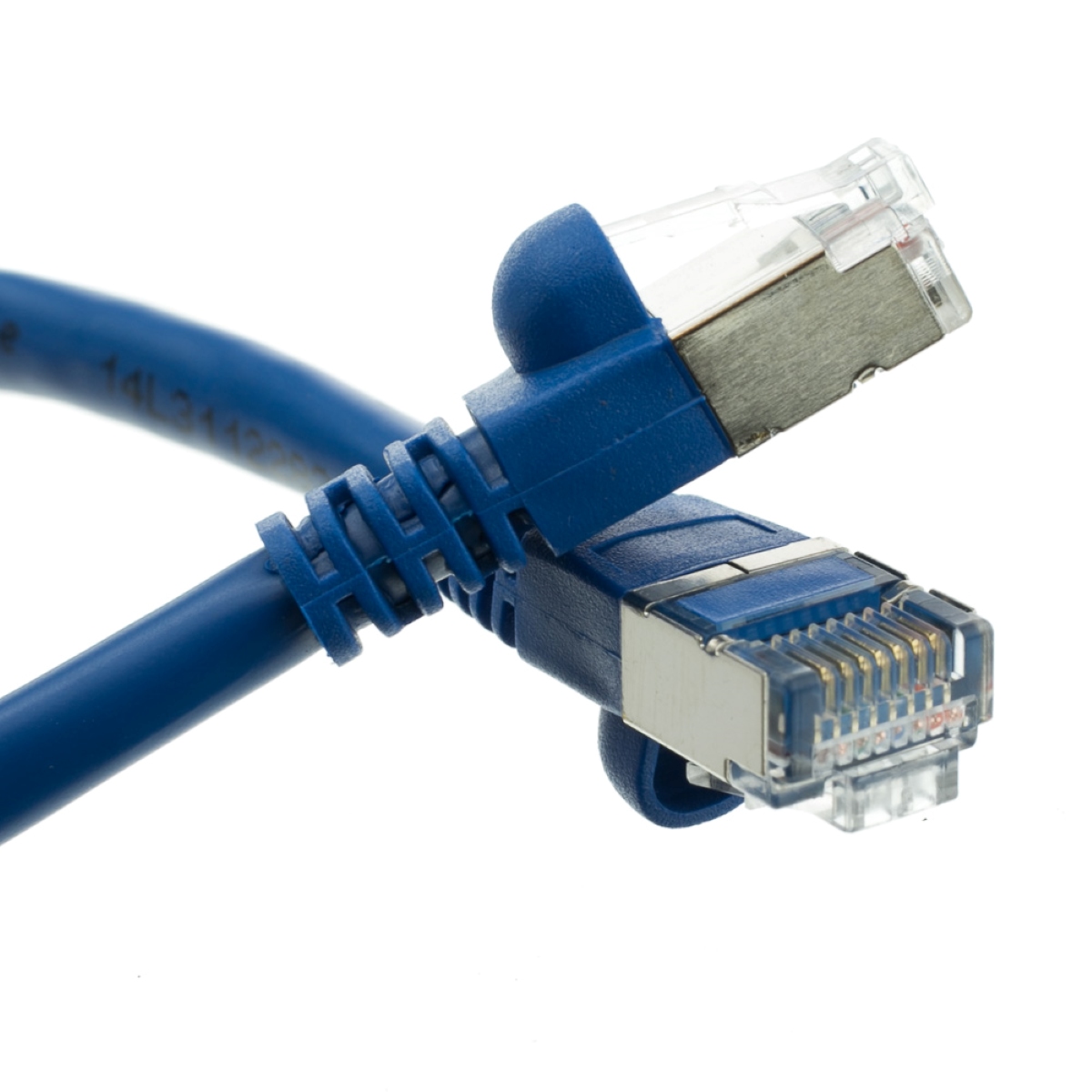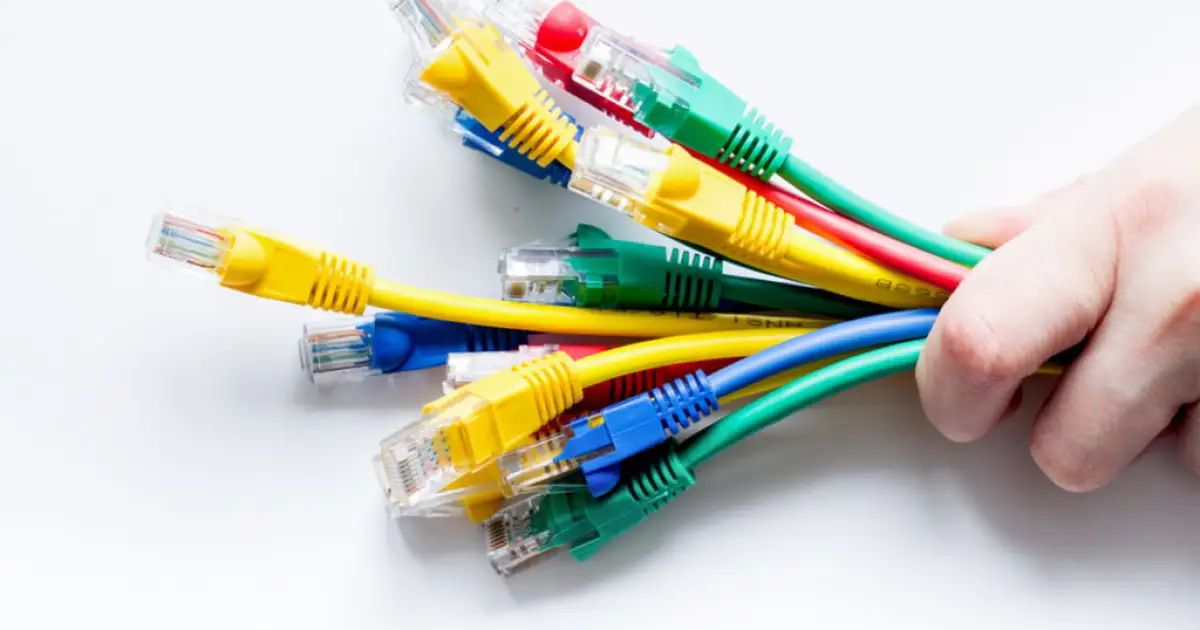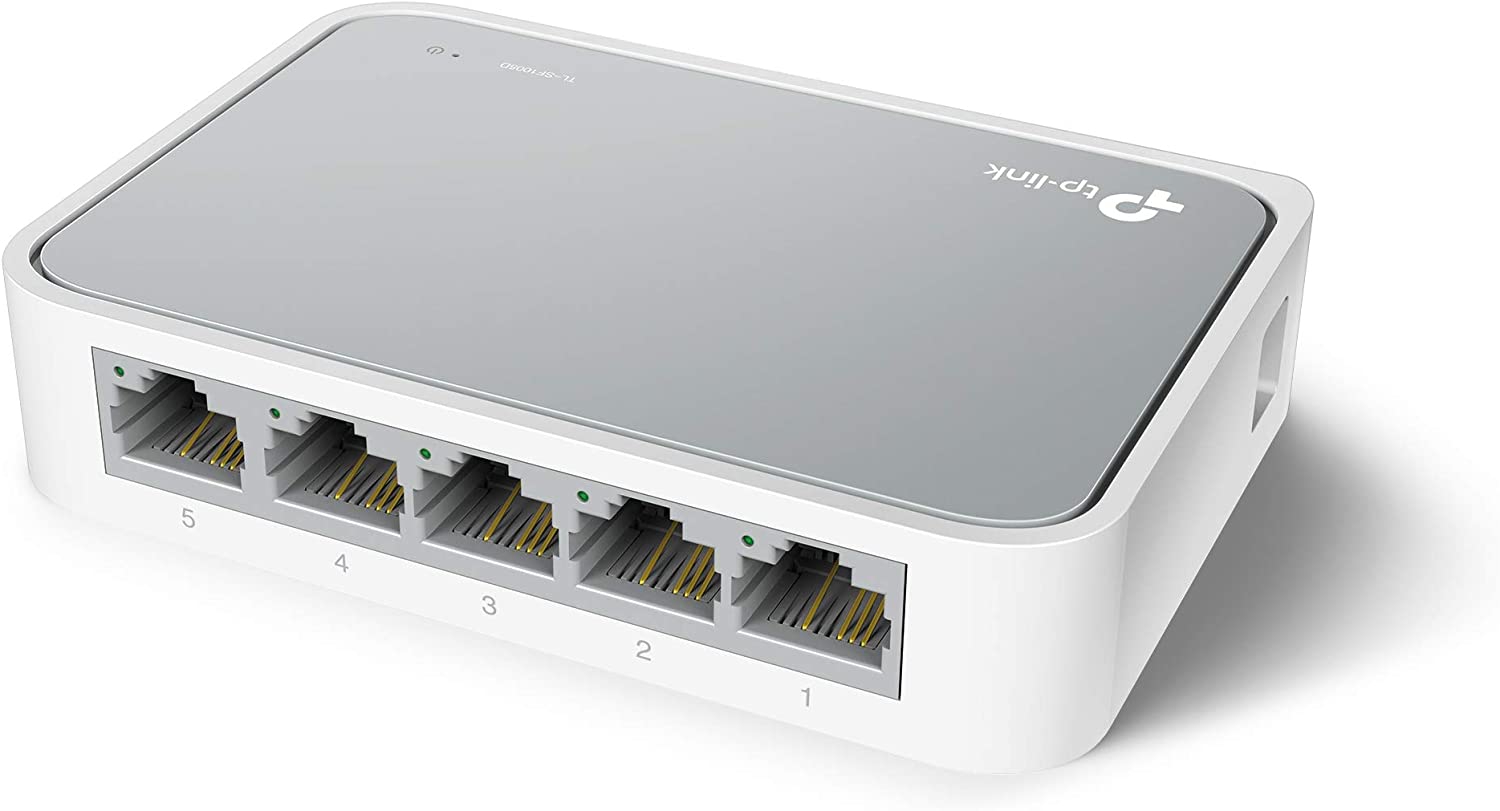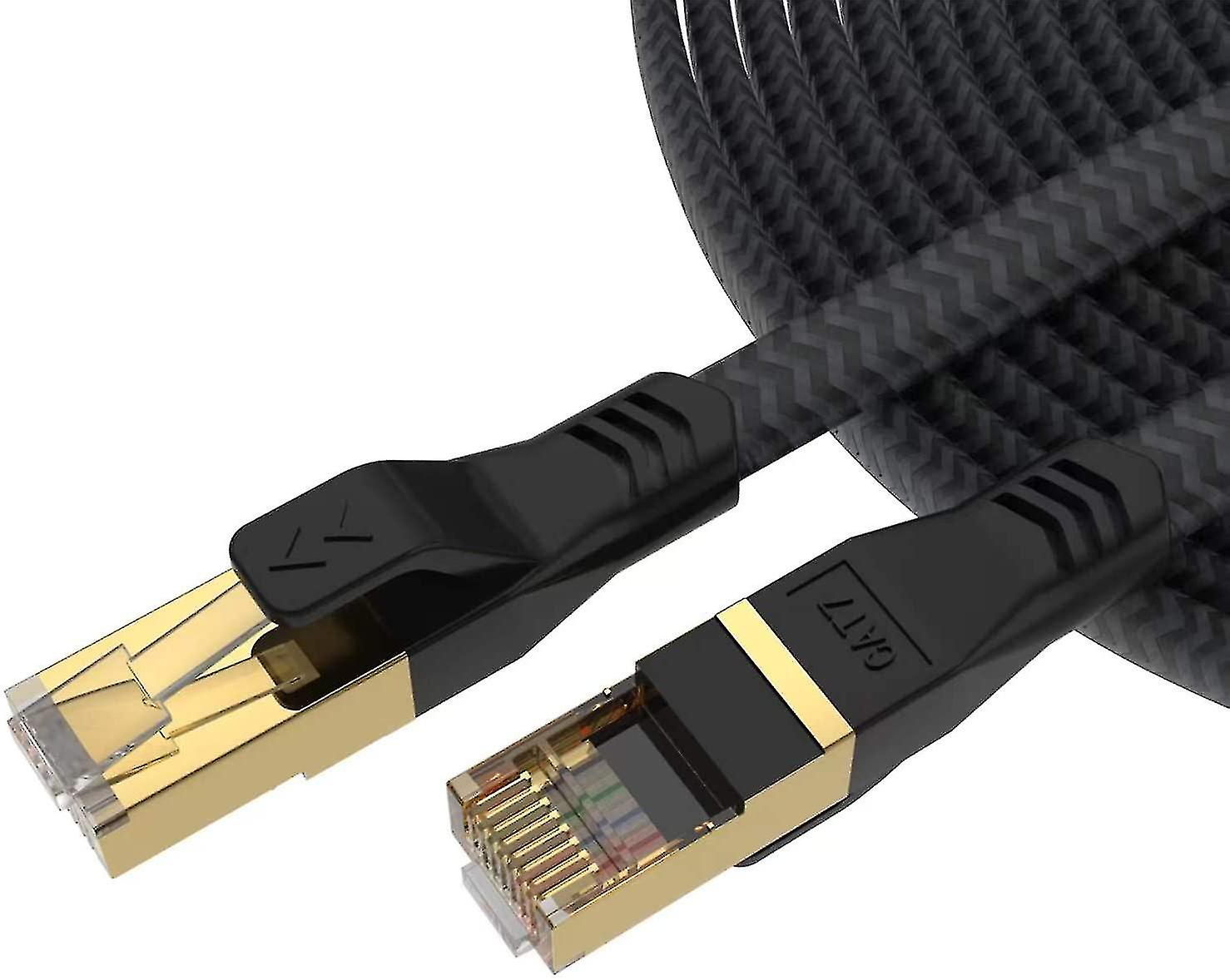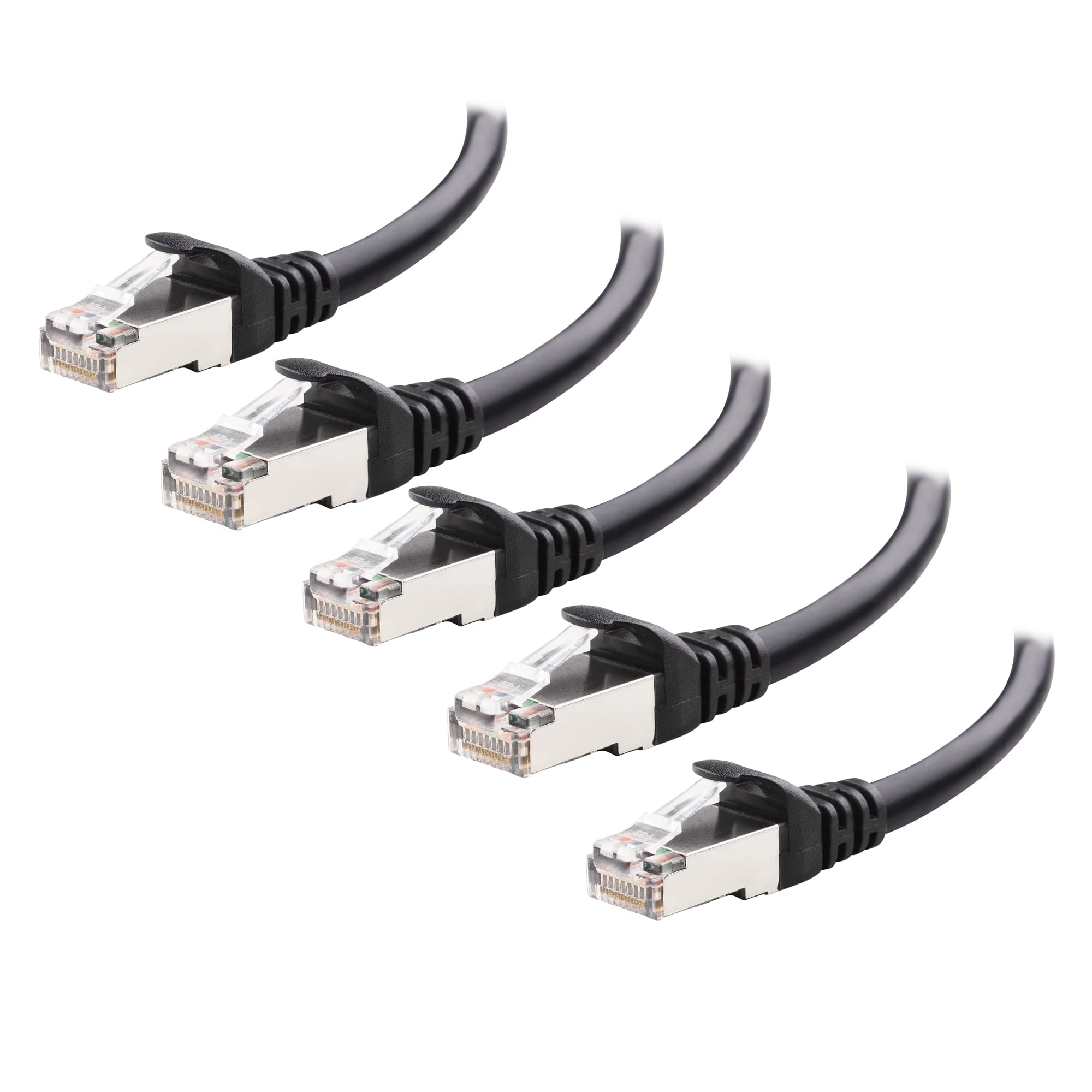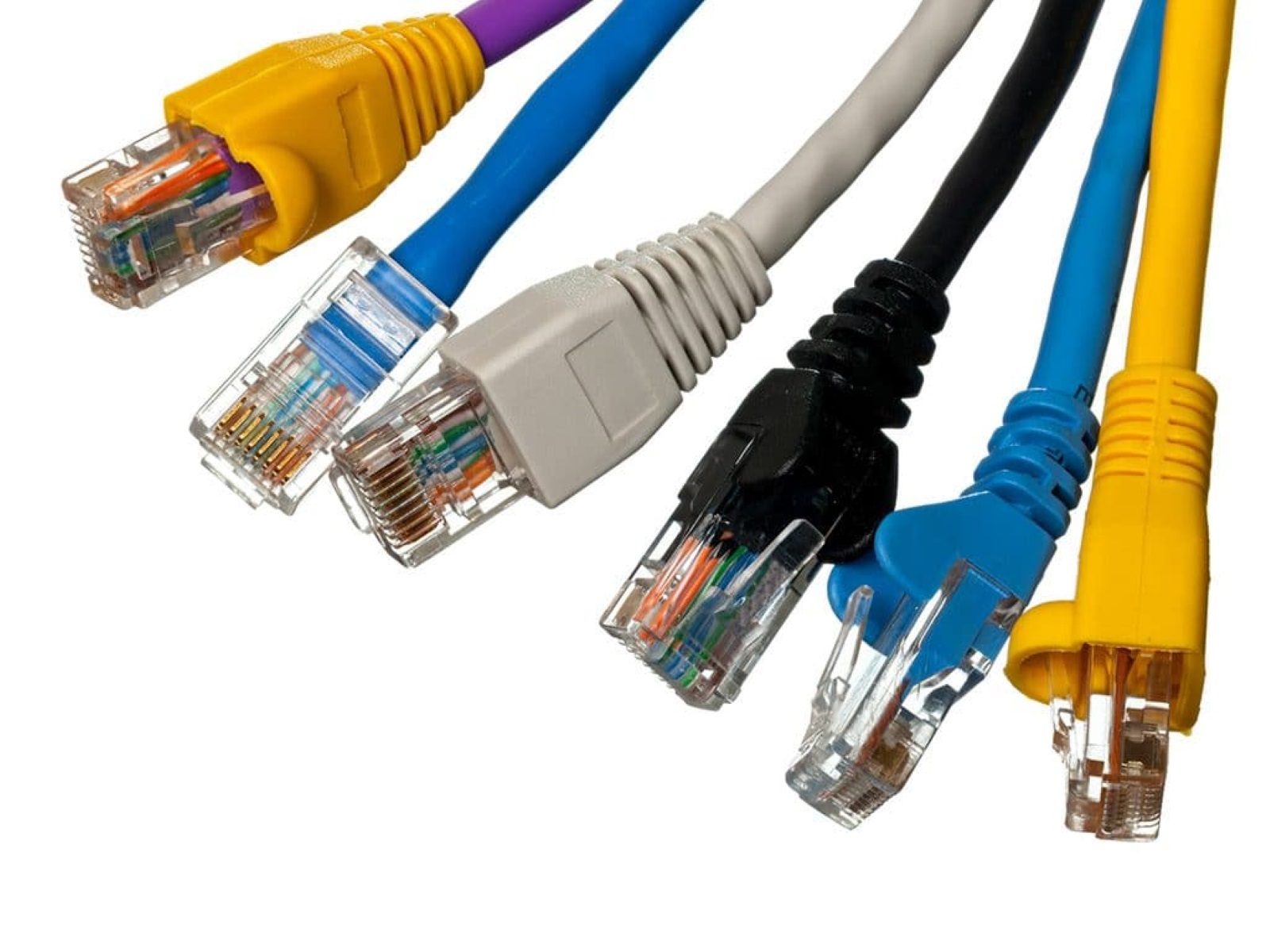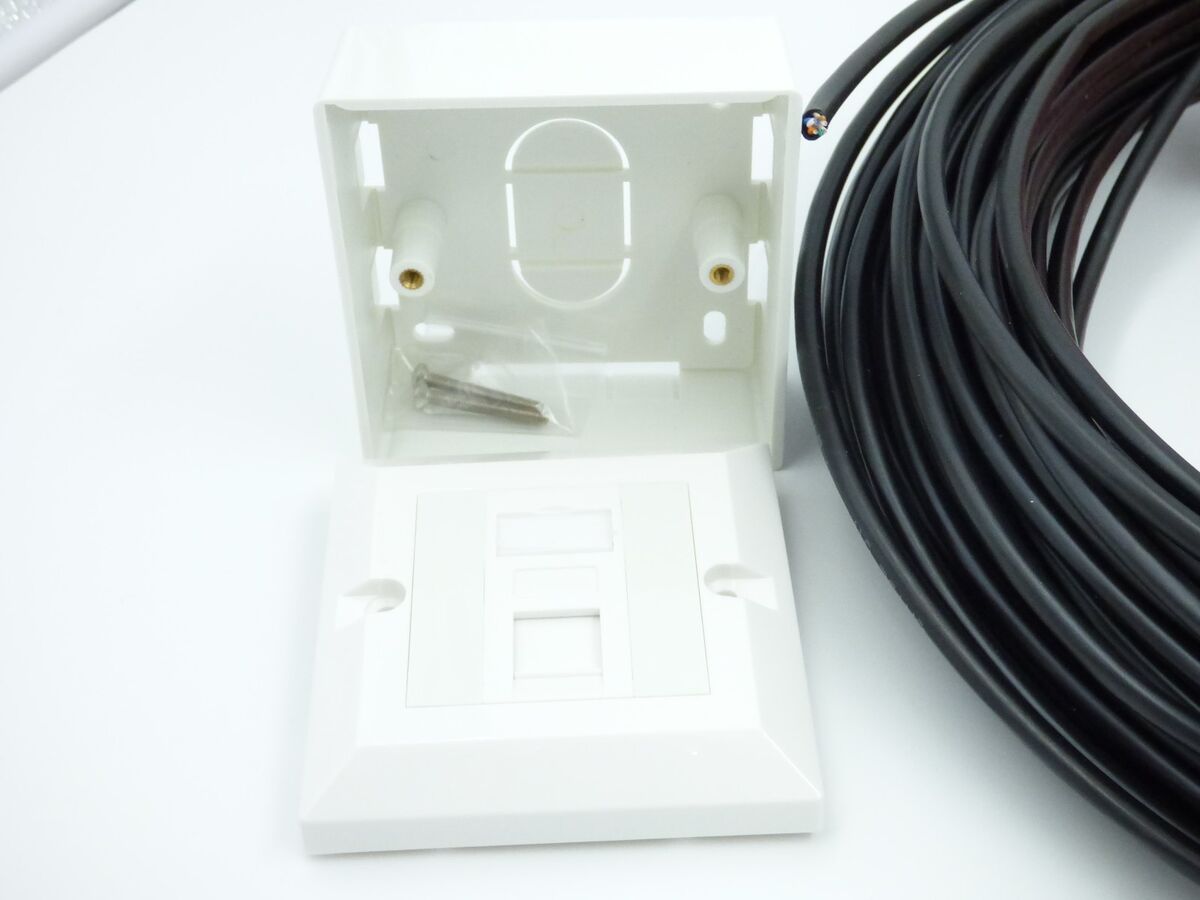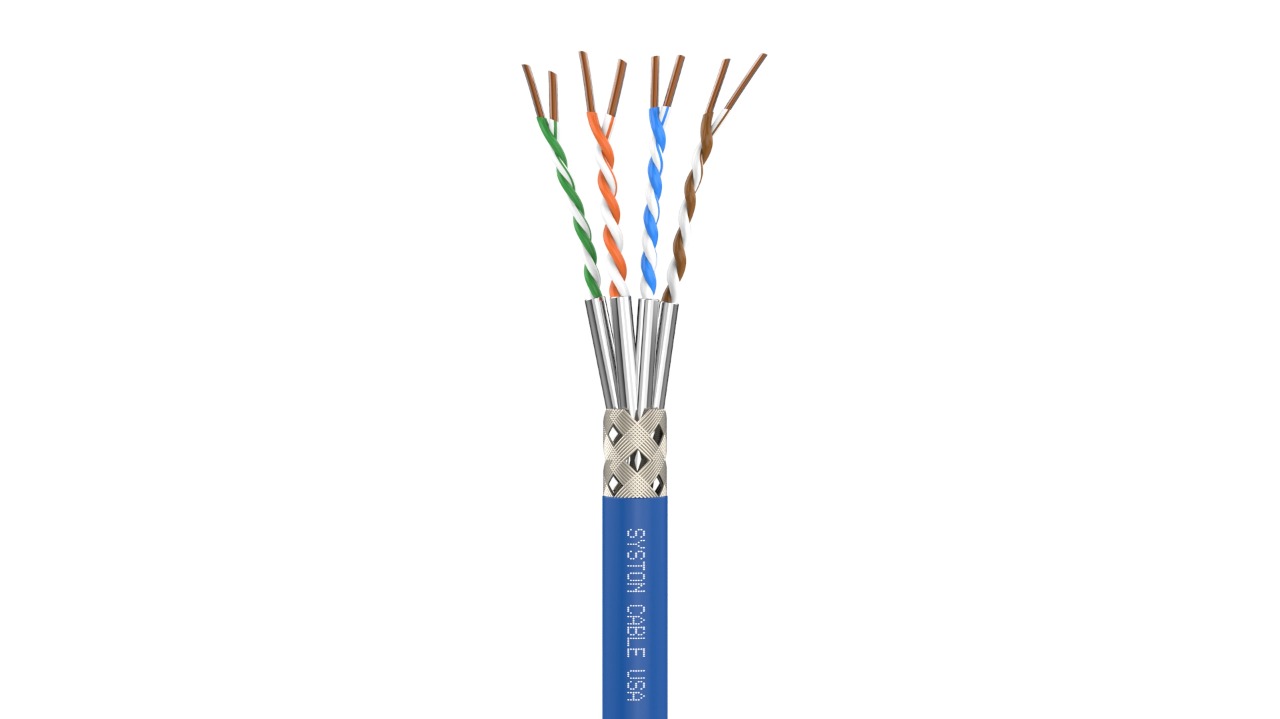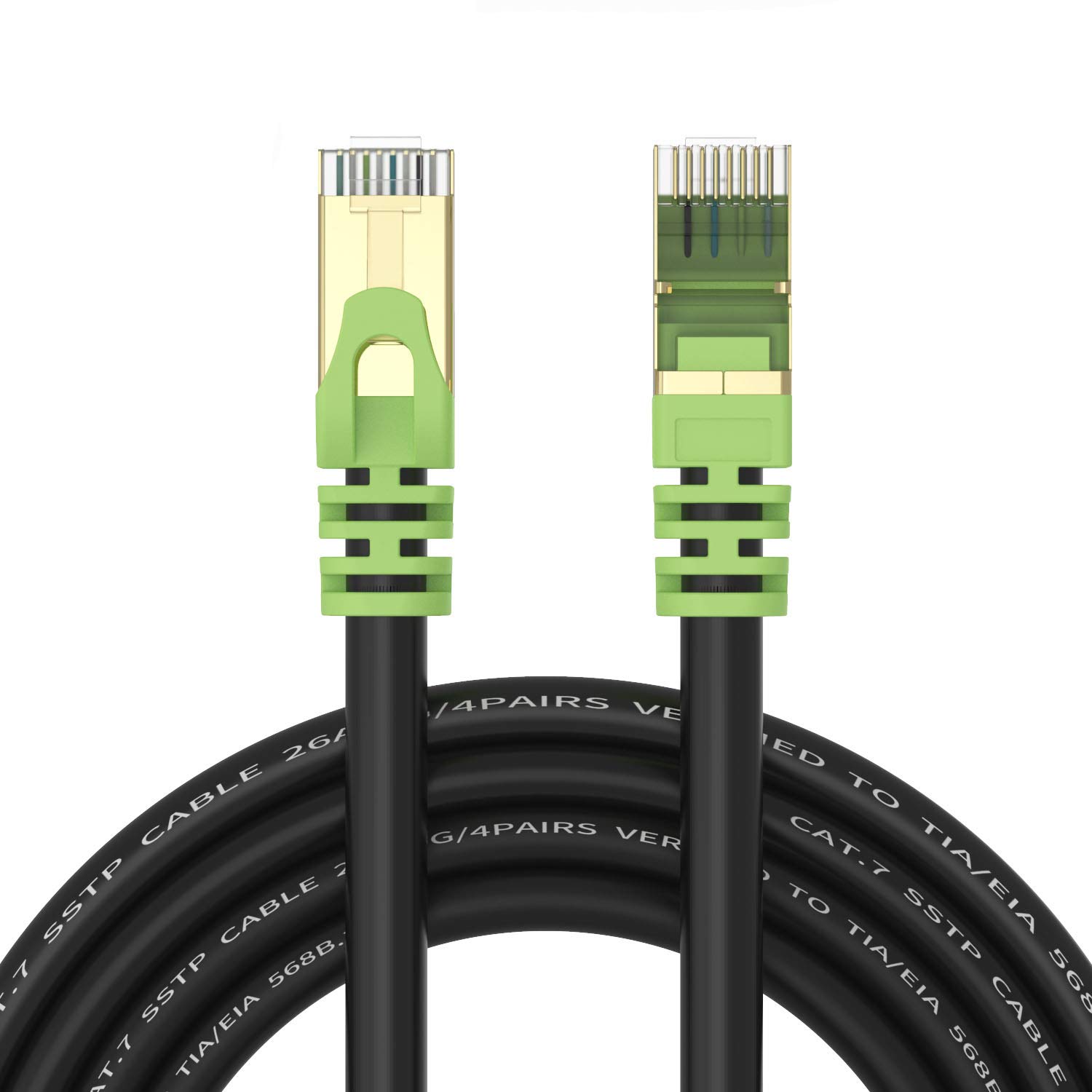Introduction
Welcome to the world of ethernet and networking! In this digital age, where connectivity is essential, having a reliable and efficient network infrastructure is paramount. One crucial component of any network setup is the Ethernet cable, which enables data transfer between devices.
In the realm of Ethernet cables, there are different types available, each designed to meet specific needs. One such type is the shielded Ethernet cable. Shielded cables, also known as screened cables, offer enhanced performance and protection against various external factors that can interfere with network signals.
In this article, we will explore the world of shielded Ethernet cables, understanding their purpose, functionality, advantages, and situations where they are the ideal choice. Additionally, we will discuss the different types of shielded cables available and how they differ from unshielded cables.
So, whether you are a networking enthusiast, a business professional, or someone looking to upgrade their home network, this article will provide you with valuable insights into shielded Ethernet cables and help you make informed decisions regarding your network infrastructure. Let’s dive in!
What is Ethernet?
Ethernet is a standardized system for connecting devices and computers in a local area network (LAN) or wide area network (WAN). It provides a reliable and efficient way to transmit data packets over a network, enabling devices to communicate and share information. Ethernet has become the de facto standard for wired network connections due to its scalability, speed, and compatibility with various devices and operating systems.
Developed in the 1970s by Xerox Corporation’s Palo Alto Research Center (PARC), Ethernet has evolved over the years to support faster data transmission speeds. Initially, it used coaxial cables to establish connections, but with advancements in technology, Ethernet now commonly uses twisted pair cables, such as Cat5e, Cat6, and Cat6a, or fiber optic cables for higher bandwidth and longer distances.
Ethernet operates on the basis of a protocol called Carrier Sense Multiple Access with Collision Detection (CSMA/CD). This protocol ensures that multiple devices on a network can access and transmit data without causing collisions or data loss. Each device connected to an Ethernet network has a unique identifier called the Media Access Control (MAC) address, allowing for efficient data routing and delivery.
Ethernet offers several advantages over other networking technologies. It provides high-speed data transmission, ranging from 10 Mbps (megabits per second) in older versions to 100 Gbps (gigabits per second) or more in modern implementations. Ethernet is also highly scalable, allowing for the connection of numerous devices within a network. Moreover, it supports various network topologies, including star, bus, and ring configurations.
In recent years, Ethernet has evolved to support Power over Ethernet (PoE) technology, which enables the transmission of both data and power over a single Ethernet cable. This development has revolutionized industries such as surveillance, telecommunications, and smart home automation, eliminating the need for separate power cables and simplifying installation and maintenance.
Overall, Ethernet serves as the backbone of modern wired networking, enabling seamless data communication and fostering the growth of connected devices and smart technologies. Its versatility, speed, and reliability make it an indispensable part of both residential and commercial network infrastructures.
What is shielded cable?
Shielded cable, also known as screened cable, is a type of Ethernet cable that provides additional protection against electromagnetic interference (EMI) and radio frequency interference (RFI) that can degrade the performance of network signals. It is designed with a conductive shield that surrounds the internal conductors, acting as a barrier to block external interference from affecting the integrity of the transmitted data.
The shield in a shielded cable can be made of various materials, such as foil or woven metal braid. This shield creates a grounded enclosure around the internal conductors, effectively blocking the ingress and egress of unwanted electromagnetic waves. By mitigating the impact of interference, shielded cables ensure a stronger and more reliable data transmission, resulting in improved network performance and reduced signal degradation.
Shielded cables are particularly beneficial in environments where there is a high likelihood of interference, such as industrial settings, data centers, and areas with numerous electronic devices. With shielded cables, the risk of signal loss, crosstalk, and data corruption is significantly minimized, leading to stable and uninterrupted network connectivity.
In addition to EMI and RFI protection, shielded cables also offer enhanced security by reducing the risk of signal leakage. This is especially important in scenarios where sensitive data is being transmitted, ensuring that the information remains private and inaccessible to unauthorized individuals.
It is important to note that while shielded cables provide excellent protection against interference, they may be slightly more expensive and less flexible compared to their unshielded counterparts. However, the enhanced performance and reliability they offer make them the ideal choice in situations where network integrity is critical.
Overall, shielded cables prove to be a valuable solution in environments where there are higher chances of interference, ensuring a stable and secure network connection. With their ability to minimize signal loss and improve overall network performance, shielded cables provide the necessary infrastructure for robust and efficient data transfer.
How does shielded Ethernet cable work?
Shielded Ethernet cables, also known as STP (Shielded Twisted Pair) cables, work by utilizing a conductive shield to protect the internal twisted pair wires from electromagnetic interference (EMI) and radio frequency interference (RFI). The shield acts as a barrier between the internal conductors and external interference, preventing the unwanted signals from degrading the quality of the transmitted data.
The shield in a shielded Ethernet cable can be made of different materials, such as aluminum foil or woven metal braid. This conductive layer surrounds the twisted pair wires, forming a grounded enclosure that dissipates and absorbs any interfering signals. The shielding is connected to ground, which helps to redirect the noise away from the internal conductors.
When a shielded Ethernet cable is used, the shield acts as a protective barrier against external electromagnetic waves. These waves can come from various sources, such as power lines, motors, fluorescent lights, or neighboring electronic devices. Without proper shielding, these interference sources can induce electrical currents and voltages on the internal conductors, resulting in signal degradation and possible data corruption.
By using shielded Ethernet cables, the conductive shield absorbs and reflects the external interference, preventing it from reaching the internal twisted pair wires. This shielding mechanism creates a more controlled and stable environment for the transmission of data signals. The twisted pair wires within the shielded cables also contribute to minimizing interference by canceling out any electromagnetic interference that may still seep through the shield.
It is important to properly ground the shield at both ends of the shielded Ethernet cable to ensure its effectiveness. This grounding connection provides a path for the unwanted electromagnetic signals to be safely diverted to the ground, further safeguarding the internal conductors.
One thing to note is that shielded Ethernet cables are more effective in environments with higher levels of electromagnetic interference. In low-interference environments, unshielded Ethernet cables, known as UTP (Unshielded Twisted Pair) cables, can provide sufficient performance. However, in situations where there is a greater risk of interference, such as industrial settings or areas with high-voltage equipment, shielded cables are the preferred choice.
In summary, shielded Ethernet cables work by utilizing a conductive shielding mechanism to protect the internal conductors from external interference. This shielding ensures a more reliable and stable transmission of data signals, even in environments with high levels of electromagnetic interference.
Advantages of shielded Ethernet cable
Shielded Ethernet cables offer several advantages over their unshielded counterparts when it comes to network performance and reliability. Let’s explore some of the key benefits of using shielded cables in your network infrastructure.
1. Improved Signal Integrity: Shielded Ethernet cables provide enhanced protection against electromagnetic interference (EMI) and radio frequency interference (RFI). The conductive shield surrounding the internal twisted pair wires acts as a barrier, preventing external interference from degrading the quality of data signals. This results in improved signal integrity, minimizing the chances of signal loss, data corruption, or packet errors.
2. Reduced Crosstalk: Crosstalk refers to the interference caused by electromagnetic signals from adjacent cables, which can result in signal distortion and performance issues. Shielded cables help to minimize crosstalk by providing an additional layer of isolation between the internal conductors and external electromagnetic waves. This reduced crosstalk ensures better data transmission and improves the overall network performance.
3. Enhanced Security: The shielding in shielded Ethernet cables helps to reduce the risk of signal leakage and unauthorized access to data. Shielded cables provide a more controlled environment for data transmission, making it difficult for external sources to intercept or tamper with the transmitted information. This enhanced security is especially important in scenarios where sensitive or confidential data is being transmitted over the network.
4. Greater Distance and Bandwidth: Shielded Ethernet cables are capable of supporting higher data transmission speeds and longer cable runs compared to unshielded cables. The shielding prevents signal degradation over longer distances, ensuring consistent and reliable performance. Shielded cables are well-suited for applications that require high bandwidth and longer cable lengths, such as data centers, server rooms, and industrial environments.
5. Reliable Performance in Noisy Environments: In environments with high levels of electromagnetic interference, shielded Ethernet cables provide a more reliable and stable network connection. They are particularly beneficial in industrial settings or areas with strong electrical currents, where interference from machinery or power lines can impact signal quality. The shielding effectively blocks out external interference, ensuring uninterrupted data transmission.
6. Future-Proofing: Shielded Ethernet cables are designed to meet industry standards for data transmission, ensuring compatibility with current and future network technologies. By using shielded cables in your network infrastructure, you are preparing for future advancements in networking technology without the need for major cable upgrades or replacements.
In summary, shielded Ethernet cables offer significant advantages in terms of signal integrity, performance, security, and compatibility. Their ability to minimize interference, reduce crosstalk, and provide a stable network connection makes them an ideal choice for environments where network reliability is a priority. When deploying a network infrastructure, consider using shielded cables to ensure optimal performance and data transmission.
When should you use shielded Ethernet cable?
Shielded Ethernet cables are recommended in specific scenarios where there is a higher risk of electromagnetic interference (EMI) or radio frequency interference (RFI) that can impact network performance. Understanding when to use shielded cables can help you make informed decisions when setting up your network infrastructure. Here are some situations where using shielded Ethernet cables is beneficial:
1. Industrial Environments: Industrial settings often have high levels of EMI due to heavy machinery, motors, and power equipment. Shielded cables are designed to withstand and minimize the effects of this interference, making them an excellent choice for industrial networks. They ensure reliable data transmission and help maintain consistent network performance, even in challenging environments.
2. Data Centers and Server Rooms: Data centers and server rooms house numerous equipment and devices that generate electrical noise. This noise can cause signal degradation and impact data transmission. By using shielded Ethernet cables, you can mitigate the impact of EMI and RFI, ensuring optimal performance and reducing the risk of data loss or corruption in these critical environments.
3. Medical and Laboratory Settings: Medical facilities and laboratories often require secure and reliable data transmission. Shielded cables protect against interference from sensitive medical equipment, scientific instruments, or electromagnetic fields, ensuring the integrity of critical data and research findings. They are an essential component in maintaining accurate and reliable communication within these specialized environments.
4. Outdoor or Harsh Environments: Outdoor installations or environments with extreme weather conditions can introduce additional challenges for network connectivity. Shielded Ethernet cables offer protection against moisture, temperature fluctuations, and other environmental factors, ensuring reliable network performance and longevity of the cables in such situations.
5. Areas with High Electromagnetic Activity: Certain locations, such as airports, train stations, or areas near high-voltage power lines, are prone to high electromagnetic activity. In these environments, shielded cables play a critical role in maintaining a stable network connection. They prevent interference from nearby electromagnetic sources, ensuring uninterrupted data transmission.
It’s important to note that shielded cables may not be necessary in every network setup. For standard residential or office environments where the risk of interference is minimal, unshielded Ethernet cables (UTP cables) may provide sufficient performance. However, when network reliability, performance, and security are paramount, using shielded Ethernet cables in the appropriate situations is highly recommended.
By considering the environmental factors, potential sources of interference, and the specific requirements of your network installation, you can make an informed decision on whether to use shielded Ethernet cables to optimize your network performance and ensure reliable data transmission.
Types of shielded Ethernet cable
Shielded Ethernet cables are available in various types, each designed to meet specific performance and application requirements. Understanding the different types can help you select the most appropriate cable for your network setup. Here are some common types of shielded Ethernet cables:
1. FTP (Foiled Twisted Pair): FTP cables consist of individually shielded twisted pairs, with an overall foil shielding that wraps around all the twisted pairs. The foil shield provides excellent protection against electromagnetic interference (EMI) and is suitable for many common networking applications. FTP cables are cost-effective and widely used in home networks and small office environments.
2. S/FTP (Shielded and Foiled Twisted Pair): S/FTP cables, also known as STP (Shielded Twisted Pair) or PiMF (Pairs in Metal Foil), combine individually shielded twisted pairs with an overall braided or foil shielding. This additional shielding provides superior EMI and noise protection. S/FTP cables are often used in industrial environments, data centers, and applications that require higher performance and greater immunity to interference.
3. S/STP (Screened Shielded Twisted Pair): S/STP cables are similar to S/FTP cables but feature an additional outer screening layer. This screened layer provides an extra protection against external electromagnetic interference, enhancing the overall performance and durability of the cable. S/STP cables are commonly used in industrial settings, areas with high electromagnetic activity, and applications that require superior shielding capabilities.
4. STP (Shielded Twisted Pair): STP cables consist of individually shielded twisted pairs, often with a woven metal braid or foil shielding around each pair. The shielding helps to minimize crosstalk and protect against EMI. STP cables are used in situations where moderate shielding is required, such as in offices, hospitals, or environments with moderate levels of electromagnetic interference.
It’s important to note that each type of shielded Ethernet cable has different performance characteristics and may be suitable for different network setups. The selection of the appropriate cable type depends on factors such as the level of interference in the environment, the required data transmission speed, and the overall network requirements.
When choosing a shielded Ethernet cable, consider consulting with a professional or referring to industry standards to ensure compatibility with your networking equipment and to meet the specific performance needs of your application. By selecting the right type of shielded Ethernet cable, you can ensure optimal signal integrity, reduce the risk of interference, and maintain a reliable network connection.
Difference between shielded and unshielded Ethernet cable
The choice between shielded and unshielded Ethernet cables depends on the specific requirements of your network setup. Understanding the differences between these two types can help you determine which one is best suited for your needs. Here are the key distinctions between shielded and unshielded Ethernet cables:
1. Protection against Interference: Shielded Ethernet cables offer protection against electromagnetic interference (EMI) and radio frequency interference (RFI) due to their shielding layers. The shielding helps to minimize the impact of external electromagnetic waves, ensuring a more reliable and stable network connection. Unshielded Ethernet cables lack this additional layer of protection, making them more susceptible to interference in environments where EMI or RFI is present.
2. Performance in Noisy Environments: In environments with high levels of electromagnetic interference, such as industrial settings or areas with strong electrical currents, shielded Ethernet cables are the preferred choice. They provide better signal integrity and reduce the risk of signal loss or degradation due to interference. Unshielded Ethernet cables may be sufficient for standard office or home setups where the risk of interference is minimal and signal quality is less of a concern.
3. Crosstalk Reduction: Shielded Ethernet cables help minimize crosstalk, which refers to the interference caused by adjacent cables. The shielding layer acts as a barrier, reducing the interaction between internal wires and minimizing signal distortion. Unshielded Ethernet cables, on the other hand, are more susceptible to crosstalk, which can impact network performance and data transmission quality.
4. Security and Signal Leakage: Shielded Ethernet cables offer enhanced security by reducing the risk of signal leakage. The shielding prevents unauthorized access to transmitted data, making it more difficult for external sources to intercept or tamper with sensitive information. Unshielded Ethernet cables do not provide this added security, making them potentially more vulnerable to eavesdropping or data breaches.
5. Cost and Flexibility: Unshielded Ethernet cables, also known as UTP (Unshielded Twisted Pair) cables, are generally more cost-effective and flexible compared to shielded cables. UTP cables are widely used in standard network installations and offer good performance in environments with minimal interference. Shielded Ethernet cables, while offering superior protection, are often more expensive and less flexible due to the additional shielding layers.
In summary, shielded Ethernet cables provide superior protection against interference, reduced crosstalk, enhanced security, and reliable performance in noisy environments. Unshielded Ethernet cables are more cost-effective and suitable for standard network setups with minimal interference. When choosing between shielded and unshielded cables, consider the specific requirements of your network, the level of interference present, and the desired performance and security factors to make the appropriate selection.
Installing shielded Ethernet cable
Installing shielded Ethernet cable requires attention to detail and adherence to specific guidelines to ensure optimal performance and protection against interference. Follow these steps to install shielded Ethernet cable effectively:
1. Plan the installation: Before starting the installation, carefully plan the cable routes and identify the areas where shielded Ethernet cables are necessary. Consider factors such as the distance, cable management, potential sources of interference, and the required number of connections.
2. Choose the appropriate cable: Select the right type of shielded Ethernet cable based on your network requirements and industry standards. Consider factors such as the transmission speed, environmental factors, and the specific shielding requirements. Ensure that the cable’s specifications match your network equipment and the desired performance.
3. Preparation and stripping: Strip the outer jacket of the shielded Ethernet cable using suitable stripping tools. Be cautious not to damage the inner shielding or the twisted pairs. The length of the stripped jacket should be sufficient to crimp connectors or terminate the cables properly.
4. Termination: Terminate the shielded Ethernet cable using appropriate connectors, such as RJ-45 connectors. Follow industry standards and guidelines for termination techniques. Ensure that the twisted pairs and shielding are correctly aligned and securely connected to the connectors.
5. Grounding the shield: Proper grounding is essential for the effective performance of shielded Ethernet cables. Connect the shielding to a suitable grounding point using connectors specifically designed for this purpose. This grounding connection provides a path for unwanted electromagnetic signals to be safely diverted, reducing the risk of interference and maintaining signal integrity.
6. Cable routing and management: Carefully route the shielded Ethernet cables away from potential sources of interference, such as power lines, motors, or areas with high electromagnetic activity. Use cable management tools, such as cable trays or conduits, to organize and secure the cables to minimize stress and prevent damage to the shielding or the internal conductors.
7. Testing and certification: Once the installation is complete, perform comprehensive testing using appropriate tools to ensure the cable’s proper functioning and adherence to industry standards. Conduct tests for signal integrity, impedance, and continuity to verify that the shielded Ethernet cable is performing as expected.
8. Documentation and labeling: Document the installation details and label the cables for easy identification and troubleshooting. Proper documentation helps in future maintenance, upgrades, and troubleshooting tasks.
It’s important to note that professional installation assistance may be required, especially for complex network setups or when dealing with larger installations. Consulting with experts or following certified guidelines ensures the proper installation and performance of shielded Ethernet cables in your network infrastructure.
By following these installation steps and adhering to industry best practices, you can ensure that your shielded Ethernet cables are installed correctly, providing optimal performance, minimizing interference, and maintaining a reliable network connection.
Conclusion
Shielded Ethernet cables play a crucial role in ensuring reliable and efficient data transmission in network infrastructures. Their ability to protect against electromagnetic interference (EMI) and radio frequency interference (RFI) makes them an ideal choice in environments with high levels of interference, such as industrial settings, data centers, and areas with strong electrical currents.
By using shielded Ethernet cables, you can experience improved signal integrity, reduced crosstalk, enhanced security, and better overall network performance. These cables offer peace of mind, knowing that your network connection is stable and resilient against external interference, minimizing the risk of data loss, signal degradation, and compromised security.
When installing shielded Ethernet cables, it is vital to adhere to proper installation techniques, terminate the cables correctly, and ensure proper grounding. Following industry standards and guidelines is paramount to achieve optimal performance and reliability.
It’s important to assess your network requirements and the specific challenges of your environment to determine whether you need shielded Ethernet cables or if unshielded options will suffice. Factors such as the level of electromagnetic interference, desired network performance, and security considerations should be taken into account when making this decision.
Ultimately, the choice between shielded and unshielded Ethernet cables depends on your specific needs and the overall goals of your network infrastructure. By understanding the advantages and differences between shielded and unshielded options, you can make an informed decision and create a network setup that meets your requirements.
Remember to consult with experts or professionals for assistance in selecting and installing the most appropriate Ethernet cables for your network. With the right cables and proper installation, you can establish a robust and reliable network infrastructure that supports seamless data transmission and enables connectivity in today’s digital world.







